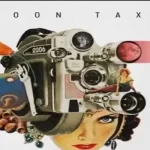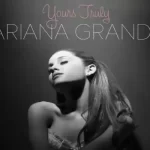✔️What is pop music?
Pop music is a genre of popular music characterized by catchy melodies, relatable lyrics, upbeat tempo, and wide appeal. It is designed to resonate with a broad audience and often incorporates elements of various musical styles.
Pop music, a genre that has shaped the musical landscape for decades, is a vibrant tapestry woven from various influences and cultural nuances. Originating in the mid-1950s in the United States and the United Kingdom, pop music has transcended time and borders to become a universal language of melodies, rhythms, and emotions. This article delves deep into the intricacies of pop music, exploring its history, defining characteristics, technological evolution, and its enduring impact on the global music scene.
The Evolution of Pop Music
The early years of pop music were characterized by its fusion with rock and roll, reflecting the youthful spirit and rebellion of the era. As rock and pop music initially intermingled, the distinction between them gradually emerged. The 1960s marked a pivotal period as pop music ventured into new sounds and styles, inspiring public discourse. The rise of technology, including improved microphones and portable radios, facilitated the dissemination of pop music to wider audiences, heralding the era of televised performances and visual presence.
Pop music genres
Pop music has a diverse range of subgenres that have emerged over the years, each with its own unique characteristics and influences. Here are some notable pop music genres:
- Alternative pop
- Ambient pop
- Art pop
- Baroque pop
- Bedroom pop
- Britpop
- Cantopop
- Chamber pop
- Christian pop
- C-pop
- Dance Pop
- Hyperpop
- Indie pop
- Israeli pop
- Jangle pop
- J-pop
- K-pop
- Latin Pop
- Mandopop
- MPB (Música popular Brasileira)
- Norsk pop
- pop
- pop Country
- pop Punk
- pop Rock
- Post-Britpop
- Progressive pop
- Q-pop
- Svensk pop
- Synth-pop
- Tai-pop
- Tontipop
- Vaporwave
- Variété Française
- Z-pop
The Influence of Technology and Media
Technological advancements have played a crucial role in shaping the trajectory of pop music. The introduction of multi-track recording and digital sampling facilitated innovative approaches to music creation and production. The advent of music television channels, such as MTV, propelled pop music into the visual realm, favoring artists with strong visual appeal. Additionally, the evolution of digital recording and electronic instruments in the 1980s transformed the genre, ushering in synth-pop and electronic dance music.

Global Spread and crosspollination
Pop music’s influence extends far beyond its Western origins, as it has become a dominant force in global music cultures. While the American and British music industries have been major players, pop music has also been embraced and reinterpreted in various regions, resulting in localized versions and unique characteristics. The rise of Latin pop and its global impact underscores the genre’s ability to adapt and resonate with diverse audiences.
Pop Music in the 21st Century
The 21st century witnessed pop music navigating the digital age and the rise of the internet. With the advent of online platforms, artists gained unprecedented exposure and the ability to interact directly with fans. The proliferation of dance music influences marked a significant shift in pop music’s sound, emphasizing escapism and partying as responses to societal challenges. Artists like Britney Spears, Justin Bieber, and Lady Gaga revitalized the genre, pushing boundaries and experimenting with new sounds.
Characteristics of Pop Music
- Catchy Melodies: Pop music is known for its memorable and infectious melodies that are designed to stick in the listener’s mind. These melodies often have a simple and repetitive structure that makes them easy to sing along to.
- Repetitive Choruses: Pop songs typically feature repetitive choruses that are catchy and easy to remember. The repetition of the chorus helps to create a sense of familiarity and makes the song more memorable.
- Upbeat Tempo: Pop music often has an upbeat tempo that encourages movement and dancing. The energetic rhythms and fast-paced beats contribute to the overall feel-good vibe of pop songs.
- Simple Song Structures: Pop music usually follows a straightforward song structure, consisting of verses, choruses, and sometimes a bridge or pre-chorus. This simplicity makes the songs easy to follow and enhances their accessibility.
- Emphasis on Hooks: Hooks are memorable musical phrases or lines that grab the listener’s attention. Pop music relies heavily on hooks to create an immediate impact and leave a lasting impression on the audience.
- Relatable Lyrics: Pop songs often have lyrics that are relatable and touch on universal themes such as love, relationships, and personal experiences. These lyrics allow listeners to connect with the music on a personal level.
- Polished Production: Pop music is known for its high-quality production values. The songs are meticulously produced with attention to detail, using advanced recording techniques and technology to achieve a polished sound.
- Broad Appeal: Pop music aims to appeal to a wide audience. It transcends cultural and language barriers, making it accessible to listeners from different backgrounds and age groups. Pop songs often have universal themes and a sound that resonates with a broad range of listeners.
- Commercial Success: Pop music is driven by commercial success and chart performance. Pop songs are crafted with the intention of topping music charts, gaining radio airplay, and achieving mainstream popularity.
- Constant Evolution: Pop music is constantly evolving and adapting to changing trends and tastes. It incorporates elements from various genres and is influenced by cultural shifts and technological advancements. This adaptability allows pop music to stay relevant and maintain its position as a dominant genre in the music industry.
Pop Music Songs
Pop music is defined by its songs, which are typically radio-friendly and designed to be commercially successful. These songs often feature catchy melodies, easy-to-remember lyrics, and a structure that includes verses, choruses, and bridges.
Pop songs are known for their ability to resonate with a wide range of listeners, crossing cultural and language barriers. They are often produced with the intention of topping music charts and gaining mainstream popularity.
Pop Music Artists
Pop music is closely associated with the artists who perform it. Over the years, numerous artists have risen to fame in the pop music industry. These artists often possess strong vocal abilities, a charismatic stage presence, and a knack for connecting with their audience.
Here’s a summarized table showcasing some influential pop music artists and their contributions to the genre:
| Artist | Era | Notable Contributions |
|---|---|---|
| Elvis Presley | 1950s | Known as the “King of Rock and Roll,” his fusion of rock and pop music reshaped the genre’s early days. |
| The Beatles | 1960s | Revolutionized pop music with their innovative sound and songwriting, influencing generations to come. |
| Michael Jackson | 1980s-1990s | Dubbed the “King of Pop,” his groundbreaking music videos and iconic performances elevated pop music’s visual aspect. |
| Madonna | 1980s-2000s | The “Queen of Pop” pushed boundaries with her music, fashion, and controversial themes, shaping pop’s evolution. |
| Britney Spears | Late 1990s- | Rose to fame as a teen pop sensation and remained influential in the 2000s, symbolizing the changing dynamics of the industry. |
| Early 2000s | ||
| Lady Gaga | Late 2000s- | Known for her eccentricity and genre-blurring music, she redefined pop’s visual and sonic landscape. |
| Present | ||
| Justin Bieber | 2010s-Present | Achieved stardom through online platforms, representing the new era of pop artists discovered in the digital age. |
| Taylor Swift | 2010s-Present | Transitioned from country to pop, showcasing the genre’s adaptability and her prowess as a singer-songwriter. |
| Billie Eilish | Present | Gained popularity with her unique sound and introspective lyrics, exemplifying the diversity within modern pop. |
| BTS | Present | The South Korean boy band’s global success illustrates pop music’s transcultural impact and fan base. |
Stylistic Origins of Pop Music
Pop music has its roots in various musical genres. While it is difficult to pinpoint a single origin, it has been influenced by several styles, including:
- Traditional Pop: Traditional pop, also known as “pop standards,” emerged in the early 20th century. It featured artists like Frank Sinatra and Ella Fitzgerald, who popularized songs with memorable melodies and sophisticated arrangements. Traditional pop laid the foundation for the catchy melodies and emphasis on vocals that are still prevalent in pop music today.
- Rock and Roll: Rock and roll had a significant impact on the development of pop music. In the 1950s and 1960s, artists like Elvis Presley, Chuck Berry, and The Beatles brought a new energy to popular music. They combined elements of rhythm and blues, country, and gospel, creating a fusion that influenced the evolution of pop music.
- Folk Music: Folk music also played a role in shaping pop music. Artists like Bob Dylan and Simon & Garfunkel brought folk elements into the mainstream, infusing pop music with storytelling, acoustic instrumentation, and introspective lyrics. This folk-pop fusion laid the groundwork for the singer-songwriter movement and continues to influence pop music today.
Cultural Origins of Pop Music
Pop music has its cultural origins in the rise of mass media, technological advancements, and changing social dynamics. It emerged during the 1950s in the United States and quickly spread to other parts of the world. The advent of television, radio, and record players allowed pop music to reach a broader audience and become a significant part of popular culture.
The cultural significance of pop music lies in its ability to reflect and shape societal trends, attitudes, and values. Pop songs often serve as a mirror of the times, addressing social and political issues, as well as personal emotions and experiences. Pop music has the power to bring people together, evoke emotions, and influence cultural movements.
FAQ about Pop Music
Q: What is the history of pop music?
A: Pop music has a rich history that dates back to the early 20th century. It has evolved and been influenced by various genres and cultural movements, making it one of the most prominent and enduring genres in modern music.
Q: How did pop music become popular?
A: Pop music gained popularity through its accessibility, relatable lyrics, and infectious melodies. The rise of mass media, such as radio and television, played a significant role in spreading pop music to a wider audience, making it a dominant force in popular culture.
Q: Is pop music the same as popular music?
A: While pop music is a genre of popular music, the terms “pop music” and “popular music” are not always used interchangeably. Pop music specifically refers to a genre characterized by its catchy and accessible nature, while popular music can encompass a broader range of genres that are currently popular.
Q: Can pop music be considered an alternative?
A: While pop music and alternative music are distinct genres, there can be some overlap between the two. Some pop artists incorporate alternative elements into their music, blurring the boundaries between the genres.
Q: How has pop music evolved over time?
A: Pop music has evolved significantly over time, adapting to changes in technology, musical trends, and cultural influences. It has incorporated new sounds, production techniques, and styles, reflecting the ever-changing nature of popular music.
Q: Does pop music have an impact on popular culture?
A: Yes, pop music has a significant impact on popular culture. It shapes fashion trends, influences dance styles, and serves as a reflection of societal attitudes and trends. Pop songs often become anthems for particular moments or movements, leaving a lasting impact on society.
Q: Is pop music only for young audiences?
A: Pop music has a wide appeal that transcends age groups. While it may be more popular among younger audiences, there are pop music artists and songs that resonate with people of all ages.
Q: Can pop music be considered artistic?
A: While pop music is often associated with commercial success, there are artists within the genre who use it as a platform for artistic expression and experimentation. Pop music can showcase both commercial appeal and artistic creativity.
Conclusion
Pop music has captured the hearts of millions around the world with its catchy melodies, relatable lyrics, and widespread appeal. Its characteristics, stylistic origins, cultural significance, derivative forms, and subgenres contribute to its enduring popularity. From traditional pop and rock and roll to dance-pop and K-pop, pop music continues to evolve and adapt, reflecting the ever-changing musical landscape. As a global phenomenon, pop music plays a vital role in shaping popular culture and connecting people through the power of music.







